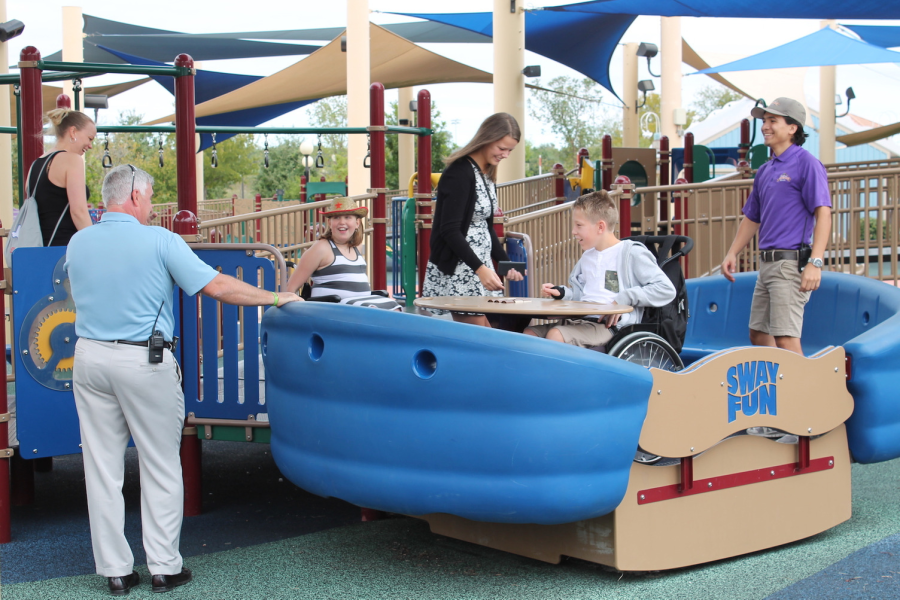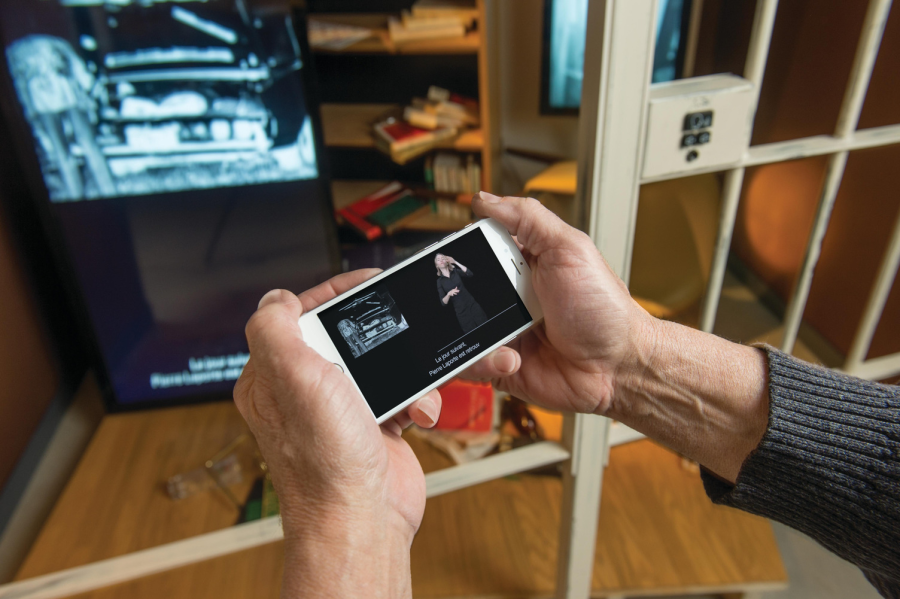Inclusive Experiences for All

When guests who are deaf and hard of hearing visit an attraction, can they easily purchase a ticket, understand safety instructions, and enjoy live entertainment?
Under the Americans with Disabilities Act (ADA), U.S.-based attractions and other businesses that serve the public must provide effective communication to guests with disabilities. If a guest requests a sign language interpreter in advance, the attraction is required to provide the service at no additional cost to the visitor. However, some attractions go beyond the basics, providing more ways for guests of all abilities to communicate with staff and engage with their surroundings.
Here’s how three attractions are making strides in customer service and comfort for those who are deaf and hard of hearing.
Morgan’s Wonderland
San Antonio, Texas, United States
Morgan’s Wonderland opened in 2010, becoming one of the first theme parks specifically developed with an inclusive design, featuring wheelchair-accessible rides, playgrounds, and gardens, as well as video captions and American Sign Language (ASL) interpreting. All commercials and most YouTube videos include an interpreter.
“Whether you read captions or you prefer ASL, we make sure that you are included in the best possible way,” says Nikki Young, the park’s edutainment director.
For guests who wear hearing aids or cochlear implants with a telecoil, the park also has multiple hearing loops at point-of-sale locations. “The hearing loop provides a magnetic wireless signal that is picked up by the hearing aid when it is set to ‘T’ or telecoil setting,” explains Morgan’s Wonderland General Manager Jessica Lizardo. “By doing this, the hearing device will in turn transfer the sound from the microphone directly to hearing aids and cochlear implants without interference. This enhances the one-to-one conversation our guests are having with our park representative.”
Morgan’s Wonderland has also partnered with several local organizations to bring in guests from the deaf and hard-of-hearing communities and ensure they feel included. One is a Texas-based nonprofit called Aid the Silent that helps kids and teens who are deaf and hard of hearing. “Through that organization, they come to the park, and we go to their events,” Young says. “It’s a great symbiotic partnership and friendship.”
Another is Deaf Link, an agency that provides services including video remote interpreting and prerecorded ASL interpreting. For a guest who wants ASL interpreting, Morgan’s Wonderland will provide an iPad with links to Deaf Link, where the guest can videoconference with an interpreter. Prerecorded videos are also available with instructions in ASL for each ride and attraction so “the guest has an expectation of what’s going to happen,” Young adds.
A member of guest services is also available for live interpreting. “[She’s] a child of two deaf adults, so she’s fluent in ASL,” Young explains of the guest services associate. One of the park’s puppeteers also incorporates the signs for friendship and inclusion into his live shows.

Canadian Museum for Human Rights
Winnipeg, Manitoba, Canada
The Canadian Museum for Human Rights (CMHR) opened in 2014. Like Morgan’s Wonderland, planners designed the museum with disability inclusion at the forefront. “Before we even opened, we established an inclusive design advisory committee,” says Maureen Fitzhenry, CMHR’s media relations manager. “The advantage is being able to think of persons with disabilities right from the beginning rather than add on. Organization will begin and then later they’ll go, ‘Oh, I guess we’ve got to adapt this.’ We’ve thought of that from the beginning.”
For instance, CMHR has described audio for people who are blind and has chosen font sizes and color contrasts with readability in mind. All videos in the physical museum (more than 100 hours of footage) have embedded sign language available in ASL and Quebec Sign Language (Langue des signes québécoise) since Canada is officially bilingual. Tours are available in sign language with at least two weeks’ notice. Sign language in French and English is also available through CMHR’s mobile app.
CMHR hosted a celebration for the 200th anniversary of ASL in 2017 and will hire a deaf mime troupe named 100 Decibels to perform for special occasions. While CMHR has exhibits about the disability rights movement, the intersectionality of human rights issues means people with disabilities shouldn’t be limited to sharing that experience only. “We’ve done lots of different kinds of programs, and it’s not necessarily specific to disability rights or deafness,” Fitzhenry says. “We try to make them just a normal part of everyday issues. We included a deaf woman during our programs on international women’s rights.”

Texas Renaissance Festival
Todd Mission, Texas, United States
The Texas Renaissance Festival (TRF) hosted its first “Deaf Weekend” event in 2015. It now offers two “Deaf Weekends” and one “DeafBlind Day” per season.
Last season, volunteer ASL interpreters covered almost 100 shows per weekend. Most shows last around 45 minutes, and some demonstrations of activities like candle-making or glassblowing are also interpreted.
“With our group, every stage show has a certified interpreter as the lead and typically at least one intern,” says Brandy Cabe, vice president of ASLfairesTX, the organization running the events. “The joust and proclamation are so large we have several interns with the certified interpreters.” Volunteers dress in Renaissance garb and get prep materials from each show in advance so they can prepare.
Michelle Bailey Martin, president of ASLfairesTX, adds, “Along with interpreter training program students, we also have volunteers from the deaf community who also work with us making sure flyers are passed out. Water is dispersed; messages are carried; and [they] generally act as pages or squires as they would have during that time period.”
Since the festival covers multiple stages over 55 acres, the events practically require an army of volunteer interpreters and interns. “We email every interpreter training program and college program in the state we can find,” Cabe says. “We email agencies, go to socials, and promote the event all year long. We make flyers and pass out TRF brochures all over.”
These special events also include a midday social, when deaf guests and their community gather for lunch. “Faire is a magical place for me from the performances, the arts, the food, and mostly the people,” Cabe says. “Being able to share that magic with the deaf community, a community that has given me so much, is an honor.”
Susan Johnston Taylor is an Austin, Texas-based freelance writer who frequently covers small-business issues.
